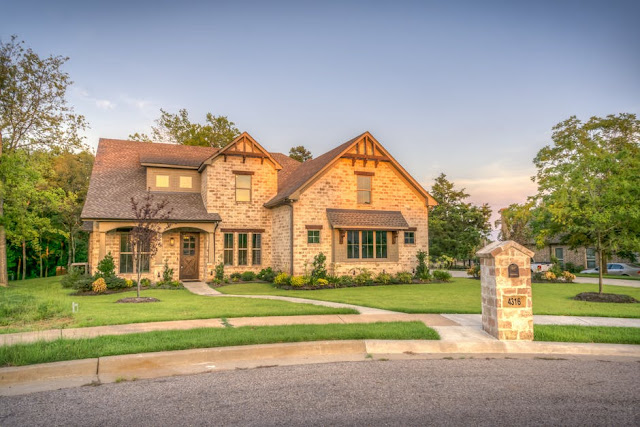 |
| Pexels |
The real estate industry is always changing. This sounds somewhat trite, and maybe a little obvious, but an alarming amount of people don’t really see this industry as something that changes all that often. Sure, we know that prices will go up and down, but, in general, the way that business is conducted is basically the same throughout the climbs and sharp descents that the market throws their way. But this outlook often comes from a misunderstanding of what it is that drives real estate costs.
Ask just about anyone and the odds are that they’ll have the same idea about what it is that ultimately determines the value of a given property: location, location, location. Sure, buyers aren’t going to be willing to fork over too much if, say, the roof is caving in, even if the area is nice. But even a bad property can go for a price that will make the landlord rich if the property is in the right location. All you’ve got to do is look at the prices that apartments you could almost label ‘decrepit’ go for in places like New York City and central London go for to see that location often supersedes all other factors.
 |
| Flickr |
But sources of revenue, as well as business models, are changing all the time in the real estate business. And these changes ultimately reflect back on to the prices for which properties are sold, so to ignore them would be a foolish mistake for any real estate developer or investor to make. The fact is that the famous “location, location, location” adage doesn’t quite hold as much water as it used to when it comes to determining the quality of a real estate investment.
There’s a lot of other information you need to gather when buying or building a house in order to properly assess the suitability of an investment. Buying or renting a swanky apartment that overlooks Central Park might sound good just from that sentence, if you’re only paying attention to the location (and, yes, that is a darn good location!), but if you’re not paying attention to the other factors that the real estate industry has their eyes on, then you could end up making mistakes in your investments that will cost you big just a few years down the line.
We’re going to take a quick look at the three things you should be paying the most attention to. These are the variables that are claiming greater importance than ever in the realm of real estate. They are geography, property type, and property life cycle. These things aren’t just important considerations for those who want to buy the property outright; even those looking for property for rent for their family should consider these aspects because they can affect what sort of rent you may end up being charged in the near future. You don’t want to sign up for a place that seems cheap but which sees skyrocketing rent in a year or two!
 |
| Wikimedia |
Considering geography
How exactly are ‘geography’ and ‘location’ different in the eyes of a real estate developer or investor? The location generally refers to the general prestige of a city or one of its suburbs, or its proximity when it comes to amenities and landmarks. You could say, in a sense, that location is something very immediate. Geography takes factors into consideration that weigh in more on a particular area’s potential. If you’re looking to make long-term investments, this is absolutely crucial information.
Let’s say you’re looking at new properties in a densely-populated and well-loved area. It’s probably safe to assume that any investment in this area is going to be a good one. But you need to consider the land itself. How much potential is there for growth and development? For new stores and other amenities to open up, for older businesses to improve their locations and thrive further? Is this an area that won’t lend itself very well to strong and booming development? Looking at things through the ‘location’ lens often leads to sales that are driven more by emotion than anything else. Geographical considerations tend to be much more analytical. It sounds less sexy, but it’s still important.
 |
| Wikimedia |
You may take this to mean that the more space there is around you, the better. The physical features of the land, as well as its atmosphere, are things that you have to research if you want to ensure you’re looking at all the variables that will come into account in the future when it comes to the value of your investment. It may be a good idea to research impending construction developments in that area.
Property type
Property types in real estate can broadly but confidently be put into three categories. There are residential properties, such as houses and apartments. There are industrial properties, such as warehouses and factories. Then there are office properties, which are… well, they’re offices.
A lot of people make the mistake of taking into account the prices they’re used to seeing for other property types when they’re trying to determine the value of a property they’re looking at. Let’s say, for example, that someone is looking for office space in London. It’s their first time looking for property for their business. But, in the past, they’ve looked at residential properties quite a few times in the same area, and so are quite familiar with how those are priced around there. A common mistake made here is that this investment will pay more attention to the value of the office space when compared to residential space.
 |
| Pexels |
This might seem like advice that is way too obvious to be of much importance in an article like this, but it’s an important consideration that an alarming number of people neglect to make. Such thinking can lead to people spending much more than they really ought to. When you’re looking for a particular type of property, you should really lose yourself in research regarding the average price and quality of similar property types, preferably even in areas slightly outside the radius in which you intend to make your purchase. Otherwise, you’re just going to end up going into this endeavor extremely misinformed.
Property life cycle
Many outside real estate professionals make the mistake of thinking that property pricing is complete and utter chaos. For sure, there are chaotic elements to it. But fluctuations are actually a little easier to predict and plan for than many people realize. People in the industry work these sorts of things out by looking at the property life cycle - and, if you’re interested in making a real estate development any time soon, then you need to be paying attention to this same cycle.
 |
| Pixabay |
Technically, there are actually two types of property life cycles. One of them deals with the forces of supply and demand that determine vacancies. These vacancies are what drive rentals and their prices. The other life cycle is the financial cycle in which prices are affected by capital flows.
Essentially, these measure what we call the peaks and troughs in the performance of particular properties. The average property has a cycle of around eight years that sees fairly consistent fluctuations over the course of several cycles. Properties tend to have cycles that range in duration from four to ten years. Buyers are often advised to enter the market when the property life cycle is still approaching a trough. Of course, sellers prefer to sell properties when the cycle is nearing a peak!
You may have heard of this sort of interplay being referred to as boom and bust. Whatever you call it, it’s a variable that you need to consider, along with location, geography, and property type, if you’re really serious about making a wise investment in the world of real estate.













